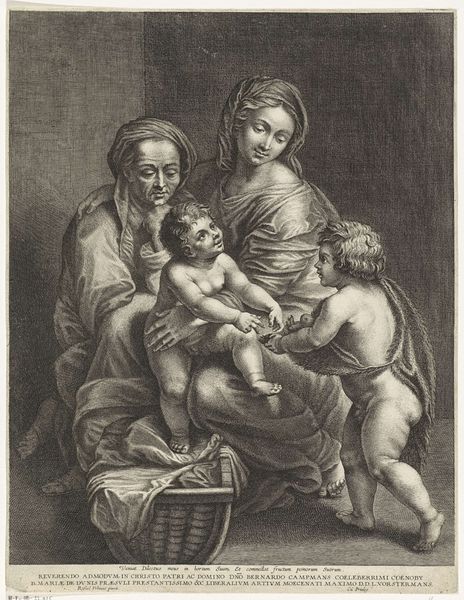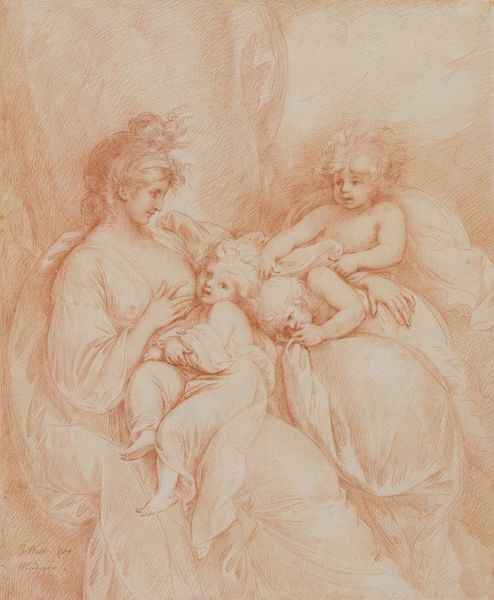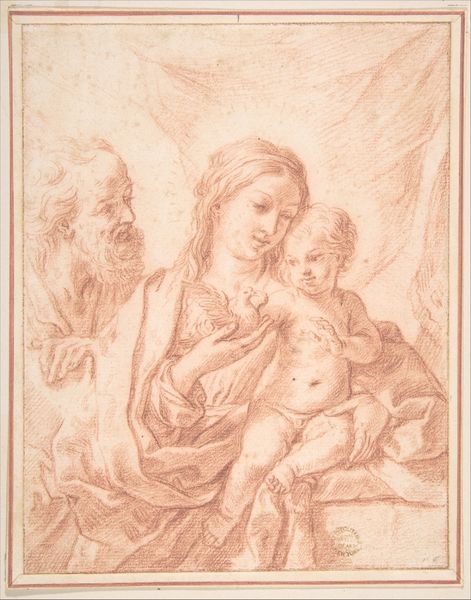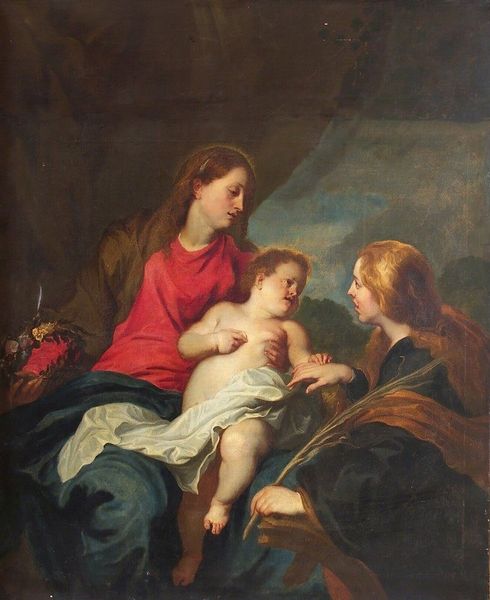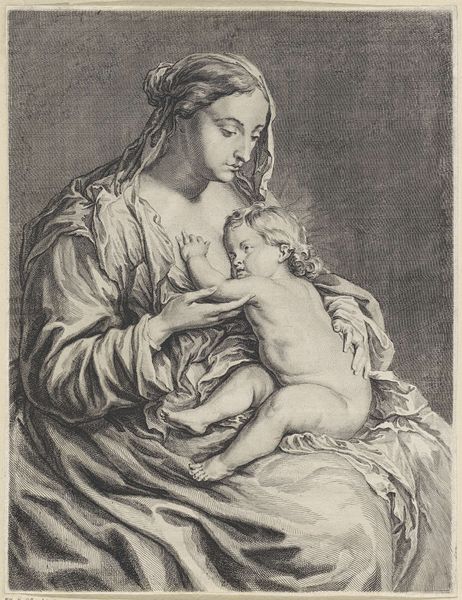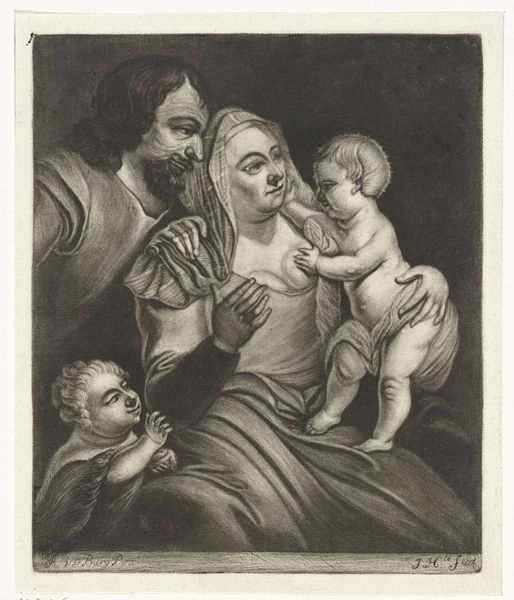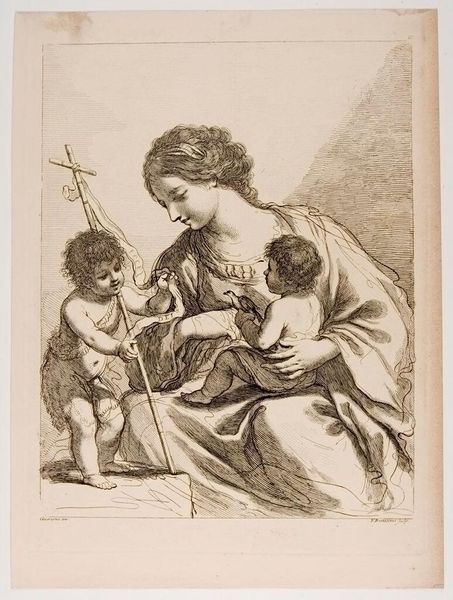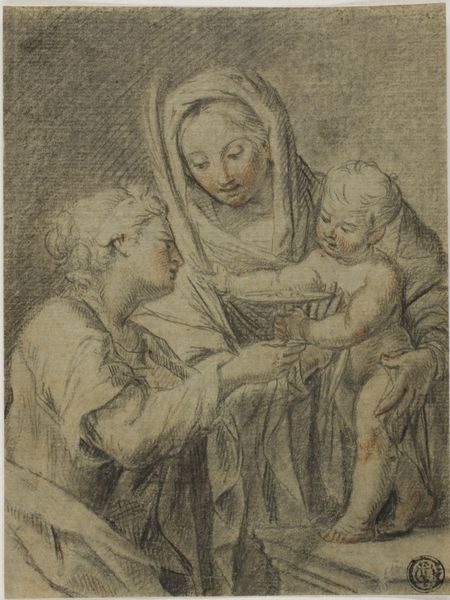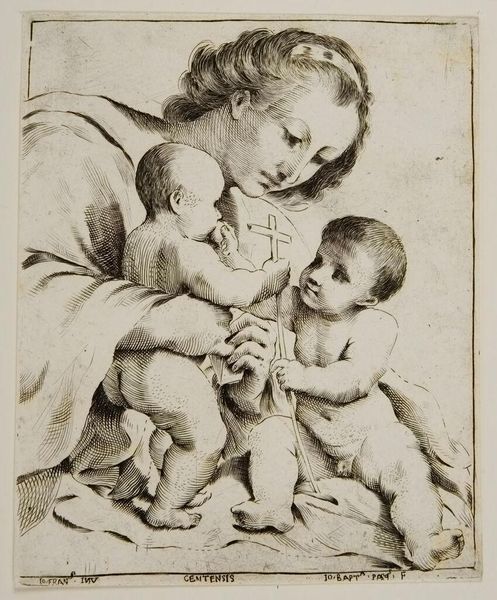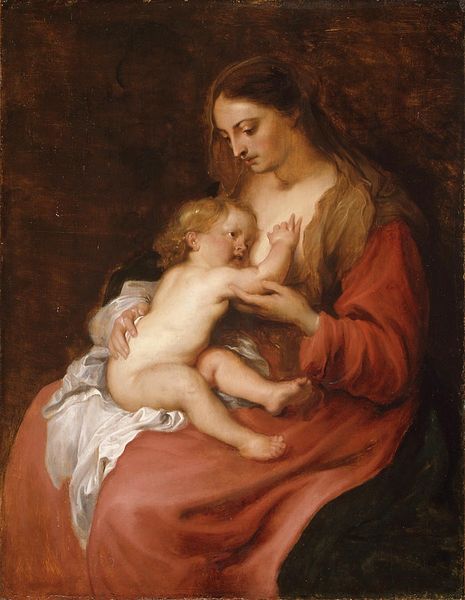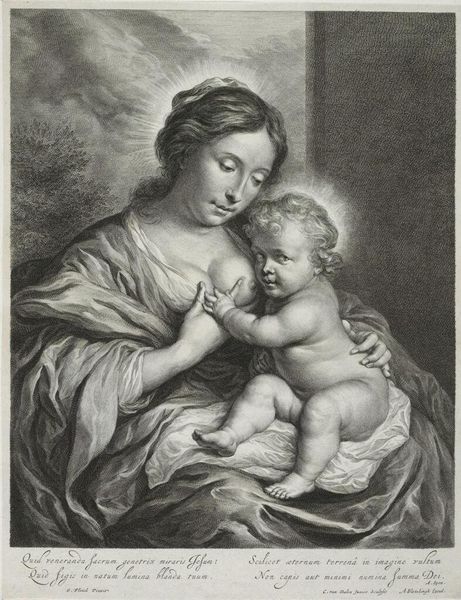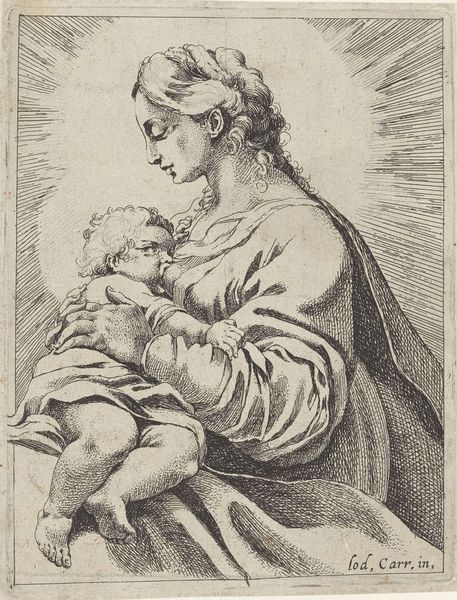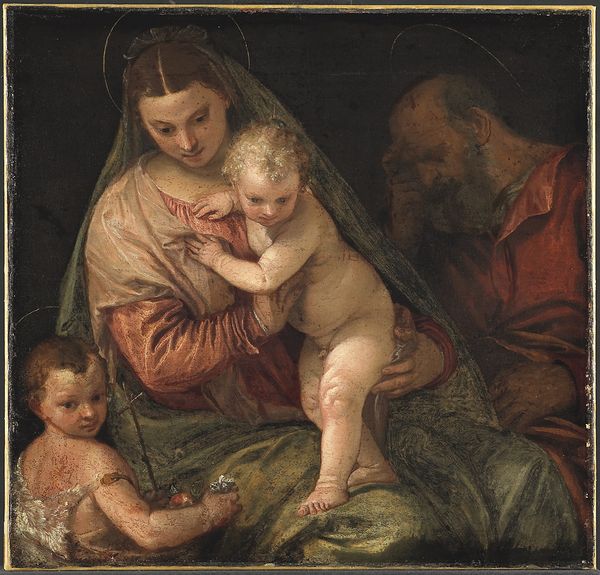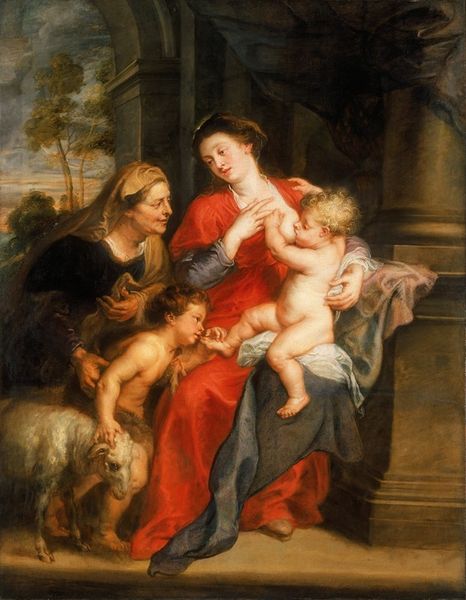
drawing, watercolor, ink
#
portrait
#
drawing
#
baroque
#
charcoal drawing
#
figuration
#
oil painting
#
watercolor
#
ink
#
portrait drawing
#
portrait art
#
watercolor
Copyright: Public Domain: Artvee
Guercino rendered this image of The Holy Family in coloured chalks sometime in the first half of the 17th century. The image presents us with a humanist vision of domesticity. Joseph, Mary, and the infant Christ are rendered in a style typical of the Italian Baroque period, known for its emphasis on naturalism, rich colour, and dynamic composition. We can imagine that the purpose of such images produced in Guercino’s cultural context was to inspire religious devotion among the faithful, in contrast to the Protestant Reformation’s austere rejection of religious imagery. But, the painting also participates in the Renaissance preoccupation with idealised beauty, harmonious composition, and the celebration of the human form, connecting it to the long history of artistic and cultural traditions that preceded it. To fully appreciate a work like this, we need to look at the religious, social and artistic conventions of the time. Accessing archival materials on the Counter-Reformation, and studies into patronage networks or the art market in Bologna will all help to understand better the place of this image in its time.
Comments
No comments
Be the first to comment and join the conversation on the ultimate creative platform.
